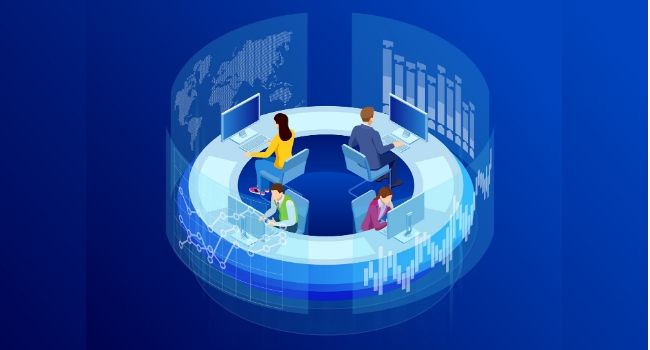
Study Finds U.S. Enterprises Hit by Short-staffed Security Operations Centers
ManageEngine, the enterprise IT management division of Zoho Corporation, recently announced results from its new study, Cloud Security Outlook 2023. The study found that enterprises have a limited number of analysts running their security operations centers (SOCs) and are deploying multiple tools in an attempt to address their cloud security challenges.
According to Gartner, 85% of organizations will embrace cloud-first strategies by 2025. ManageEngine’s study has also revealed a surge in cloud adoption, with 72% of respondents using multi-cloud applications and another 5% using hybrid cloud systems. The adoption rate will further increase in 2023 and 2024 because 23% of respondents are planning to move to the cloud in the next 24 months.
Amid this situation, enterprises are forced to tackle numerous cloud security threats, including compromised accounts. Enterprises are hampered by short-staffed SOCs, which has led to concerns about their cloud security resiliency. As many as 77% of respondents stated that they only have three to five security analysts running their SOCs.
The ManageEngine study further revealed that enterprises are finding it increasingly difficult to gain visibility into cloud activities and comply with various stringent regulations. Nearly half (48%) of respondents find compliance with cybersecurity laws, especially those related to the cloud, to be highly challenging.
These factors are driving enterprises to adopt a consolidated security architecture that facilitates streamlined, efficient security operations. An overwhelming 97% of respondents will be evaluating a solution that provides all security functions in a single console in 2023.
“The adoption of CASBs and SIEM platforms helps enterprises ensure security and integrity. However, having different tool sets lead to a visibility gap and complicates cloud security management amid unpredictable threats," said Manikandan Thangaraj, vice president of ManageEngine. "Cyber resilience refers to the ability of an organization to ensure business continuity in the event of a cyberattack with the help of business processes and tools. Cloud security resilience, therefore, requires enterprises to have visibility, enhanced policy enforcement, infection isolation and impact neutralization from a unified security architecture."
The findings of the survey indicate that:
- A lack of staffing and orchestration makes the security process complicated.
- Most respondents (84%) stated they either have fewer than five security analysts or don't have dedicated analysts at all to run their SOCs.
- 94% of respondents use different security tools to protect data, monitor user access, adhere to compliance mandates and gain visibility into cloud platforms.
- The three most common and impactful cloud security threats are identity-based.
- The IT professionals surveyed stated that cloud account compromise is the most common and impactful cloud security threat (35%), followed by external cloud account exploits (23%) and unauthorized access and account compromise by insiders (14%).
- Compliance proves to be challenging for enterprises.
- About half (48%) of those who monitor their cloud access or have hybrid cloud systems deployed said that the process of ensuring compliance is highly challenging. Another 37% acknowledged that it is tough, but manageable.
- Only 16% of respondents said that they are all sorted when it comes to compliance with cybersecurity laws, especially those related to the cloud.